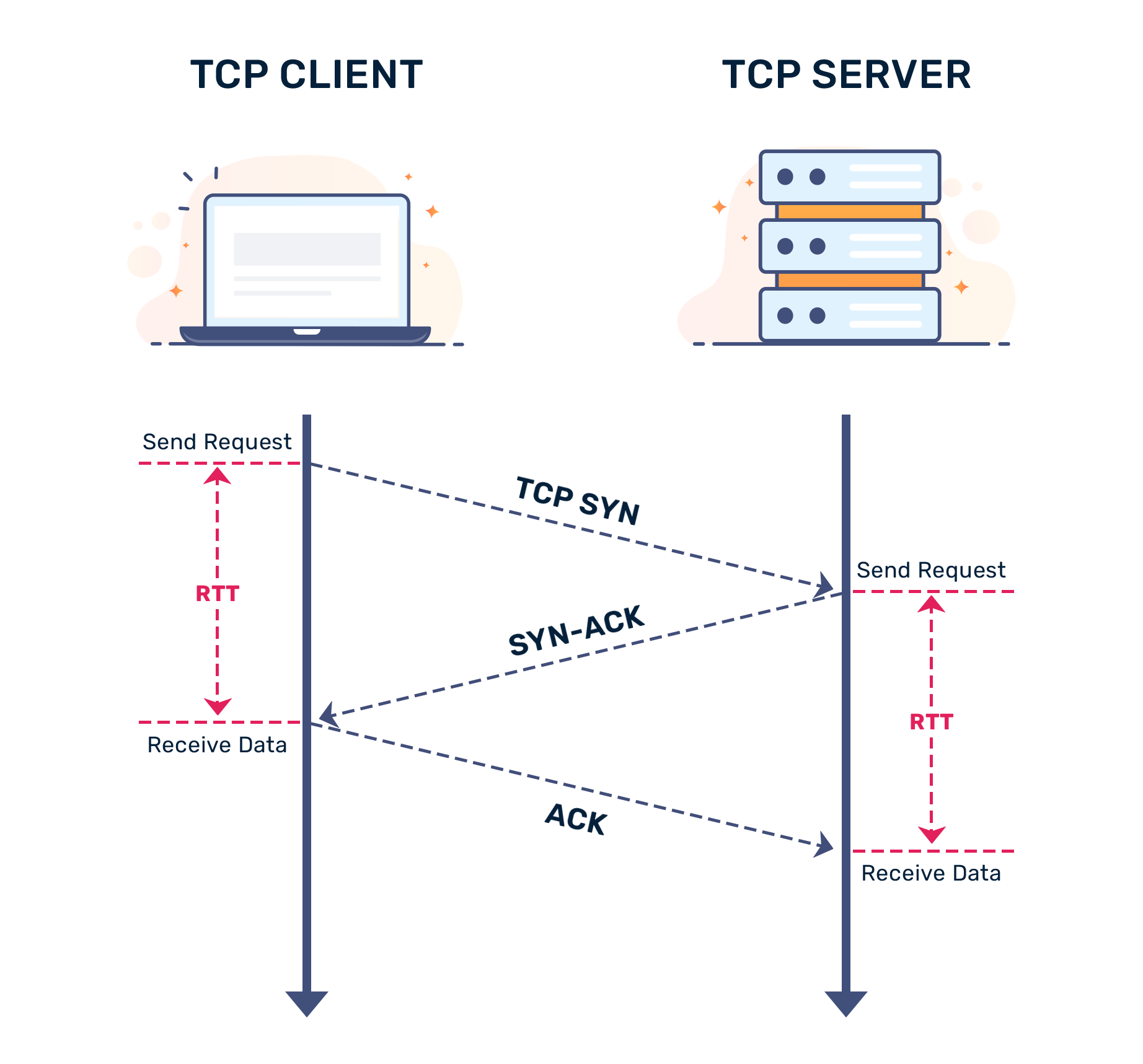What is Round Trip Time (RTT) and what does it mean for networking?
Introduction
RTT measures latency between a client and a host, including the time taken for the host to respond. Tools such as ping, traceroute, and mtr are often used when measuring latency. These tools report various metrics, including latency and the Round Trip Time.

To understand RTT, you might need a refresher about TCP connections. When a connection is established, a client sends a SYNchronize packet, followed by a SYN-ACK state. If everything goes well, the client receives an ACKnowledge response from the host.
How to measure RTT
Round Trip Time can be measured using any of the tools above, and even others not mentioned in this guide. For example, let's use ping. When you run ping test.b-cdn.net, you see an output like this:
ping test.b-cdn.net -c 4
PING test.b-cdn.net (138.199.57.151): 56 data bytes
64 bytes from 138.199.57.151: icmp_seq=0 ttl=57 time=14.524 ms
64 bytes from 138.199.57.151: icmp_seq=1 ttl=57 time=15.309 ms
64 bytes from 138.199.57.151: icmp_seq=2 ttl=57 time=15.215 ms
64 bytes from 138.199.57.151: icmp_seq=3 ttl=57 time=15.992 ms
--- test.b-cdn.net ping statistics ---
4 packets transmitted, 4 packets received, 0.0% packet loss
round-trip min/avg/max/stddev = 14.524/15.260/15.992/0.520 ms
Take a look at the last line, which refers to the round-trip. The time shown is the total time taken for a request. This includes the time taken for SYNchronization. The next value is the time for the packet (in this case, an ICMP echo) and the time taken for a reply to be ACKnowledged and received.
Diagnostic tests might detect suboptimal latency due to a variety of issues:
- ICMP deprioritization
- Rate-limiting, wherein routers are configured not to reply after a certain number of ICMP requests.
- Geographical distance
- Long physical distance can mean your ICMP packet needs to hop over more networks before it reaches its destination.
- Poor network conditions
- Attempting to test network performance to a host on a slow 3G connection; or a heavily congested network
- Server issues
- Servers occasionally experience periods of high congestion, meaning they don't have enough CPU cycles left to send an ACKnowledgement for your
pingrequests.
- Servers occasionally experience periods of high congestion, meaning they don't have enough CPU cycles left to send an ACKnowledgement for your
For the most part, when measured under typical conditions, RTT can provide valuable insight into the performance of existing routes. With deprioritization, ICMP responses can occasionally be lost or be delayed significantly. In most cases, routers either block or accept requests. Deprioritization is less popular than outright blocking ICMP requests because they make it more difficult to diagnose routing and latency issues.
Conclusion
In essence, RTT is a performance metric returned by ping, traceroute, and many other latency monitors. It is important to understand this metric as it bundles both the time taken to reach the host (using your ISP's routes) and back (using a host's routes). The routes taken to reach a host and back are sometimes different, which is why this metric is so helpful for both end-users and network administrators alike.
